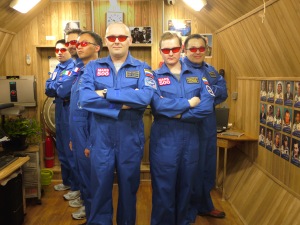500 Days of…Solitude
So this piece of news is a bit old, but I think its worth talking about: we’re one step closer to intersolar travel! I’m not talking about a probe or rover, however. In this case I’m talking about things of a human nature. From 2007 – 2011, in a cooperative effort between the Moscow-based institute, the European Space Agency, and China’s space training center, an experiment called Mars500 was carried out in a mock spaceship in the Russian Academy of Sciences’ Institute of Biomedical Problems. In a series of three phases, the experiment was designed to study the psychological and physical effects of long-haul space flights on human, specifically to the Red Planet and back (but only the participants in the third phase stayed in the capsule for the full 520 days). In that last experiment, six men, three Russian, one Italian-Colombian, one French, and one Chinese, stepped into the mock-up and were not let out again until 18 months later. When the “spaceship” door was once again opened on November 4, 2011, all six men emerged, pale and thinner than before, but virtually unscathed.
In fact, results from the experiment showed that “there was no isolation within the isolation chamber“, and each member of the crew had at least a minimum amount of social contact. The researchers also found that no deadly microorganisms had grown in the “spaceship” during the experiment, but they did find evidence of the formation of “biofilms” on structural elements inside the spacecraft, and more importantly, on components in the life support system. This could present a risk for crews of real long-haul flights, as they may cause not only infections, but also lead to the malfunction of important instruments. One last finding regarded sleep deprivation in the astronauts. The mission changed the sleep patterns of some of the crew members and led to greater sedentariness, decreased alertness, and disturbed sleep quality.
Also, here’s a link to a video diary the ESA put together of those 500 days.
Unfortunately, any thought of a real long-haul flight is still far in the future, as our technology is still decades away from being able to protect astronauts from cancer-causing cosmic radiation, land them on a planet 54.6 million miles away, and bring them back home again. However, although this experiment highlighted some challenges that need to be addressed as we get ever closer to sending a crew of astronauts out on a long-haul trip, I’m still really excited by the results. At least from a human psychological level, I think the fact that six men of different nationalities could make it for the 520-day round trip without incident shows that with the right screening and training, it will definitely be possible to send manned international missions to explore the wonders of our own solar backyard.

